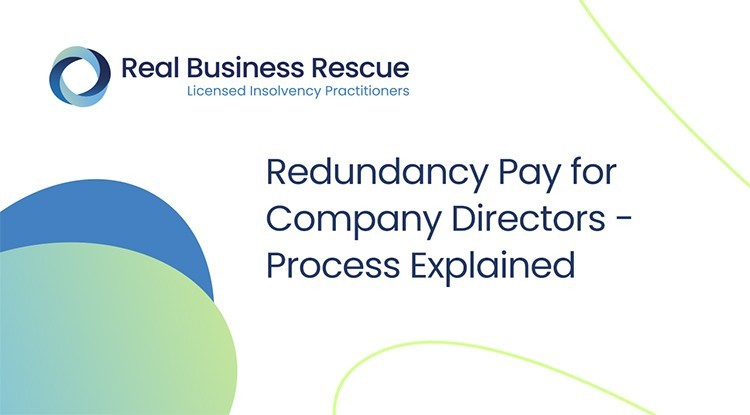Redundancy Pay If Company Goes Bust: Recognizing Your Privileges in the UK
Redundancy Pay If Company Goes Bust: Recognizing Your Privileges in the UK
Blog Article
Investigating the Interaction In Between Business Redundancy and Organizational Flexibility for Future Growth
In the vibrant landscape these days's organization world, the detailed connection between firm redundancy and organizational flexibility becomes an important element for continual growth and success. Companies usually face the obstacle of striking a delicate equilibrium in between preserving a degree of redundancy to reduce risks and promoting adaptability to respond promptly to the ever-evolving market demands. This fragile interaction holds the essential to not just surviving in unstable times but likewise thriving when faced with unpredictability. As we check out the complex dimensions of this interplay, fascinating insights right into just how organizations navigate these intricacies to lead the way for future growth await.
Value of Firm Redundancy
Firm redundancy is a crucial element that improves business strength and mitigates operational risks. By incorporating redundancy measures within the organizational framework, companies can much better stand up to unforeseen disruptions and fluctuations in the business environment. Redundancy acts as a strategic barrier, allowing companies to adapt and react effectively to unanticipated obstacles without endangering crucial procedures.
One secret aspect of the significance of company redundancy is its duty in making certain connection during times of crisis. When encountered with abrupt adjustments or emergency situations, repetitive systems, resources, or personnel can tip in to preserve important functions and prevent widespread disruptions. This connection not only safeguards the company's online reputation and consumer depend on however also minimizes financial losses and functional downtime.

Strategies for Organizational Adaptability

Developing adaptable business frameworks that enable for quick modifications to market dynamics and consumer demands is essential for remaining affordable in a swiftly evolving environment. By proactively identifying possible disturbances and possibilities, organizations can proactively grow and adjust in an ever-changing service landscape.
Harmonizing Redundancy and Flexibility
Accomplishing a harmonious balance in between operational redundancy and business adaptability is vital in browsing the intricacies of a dynamic company environment. Striking the appropriate balance in between redundancy and adaptability is a delicate procedure that requires a deep understanding of the organization's objectives, market characteristics, and threat tolerance.
To attain this balance, firms need to conduct normal analyses of their procedures to recognize areas where redundancy is needed for danger mitigation and where flexibility can drive innovation and growth. Implementing flexible frameworks, cultivating a culture of constant knowing and renovation, and encouraging open interaction across all levels of the organization are vital methods to harmonize redundancy and flexibility properly. By aligning these two vital aspects, companies can position themselves for lasting development and success in an ever-changing service landscape.
Study on Adaptation Success
In analyzing instances of effective business adjustment, it becomes evident that the interaction between operational redundancy and flexibility is a specifying aspect in shaping resilient businesses. One engaging study is that of Netflix. Initially a DVD rental solution, Netflix showed exceptional continue reading this versatility by transitioning into a streaming system when digitalization interrupted the market. By strategically purchasing innovation and content production, Netflix not just survived yet grew in a quickly developing market. Another standout example is Amazon. Beginning as an on the internet book shop, Amazon continuously adjusted its company version, broadening right into diverse sectors such as cloud computing and artificial knowledge. This versatility allowed Amazon to stay in advance of rivals and satisfy transforming consumer needs. Last but not least, Adobe offers a significant picture of effective adaptation. The firm moved from marketing software licenses to a subscription-based version, making sure recurring profits streams and boosted customer interaction. These study emphasize the relevance of functional redundancy coupled with organizational versatility in cultivating long-term growth and competition.
Building Durability for Future Development
Building strength for future growth requires a strategic positioning of operational procedures with market dynamics and emerging fads. Firms need to adapt to transforming atmospheres by fostering a society of flexibility, innovation, and constant improvement.
Moreover, promoting strong relationships with stakeholders, such as clients, employees, distributors, and the neighborhood, is vital for weathering uncertainties and keeping trust and assistance during stormy times. Effective interaction and openness play an important duty in building durability, as they help line up assumptions and facilitate cooperation in navigating uncertainties.
Furthermore, companies require to prioritize knowing and growth initiatives to upskill workers and outfit them with the required tools to adjust to transforming situations. By spending in their labor force, firms can improve their versatility and agility, eventually strengthening navigate to these guys their resilience for lasting future development.
Conclusion

In the dynamic landscape of today's service world, the complex relationship between firm redundancy and organizational versatility arises as a critical element for continual growth and success. Business usually deal with the difficulty of striking a fragile balance between preserving a degree of redundancy to reduce dangers and cultivating versatility to react swiftly to the ever-evolving market needs.To accomplish this balance, business need to perform normal evaluations of their operations to identify areas where redundancy is essential for risk mitigation and where flexibility can drive development and growth.In verdict, the interaction between company redundancy and organizational versatility is essential for future growth. Building try these out durability via a mix of redundancy and flexibility will guarantee that business are prepared for the difficulties of the future.
Report this page